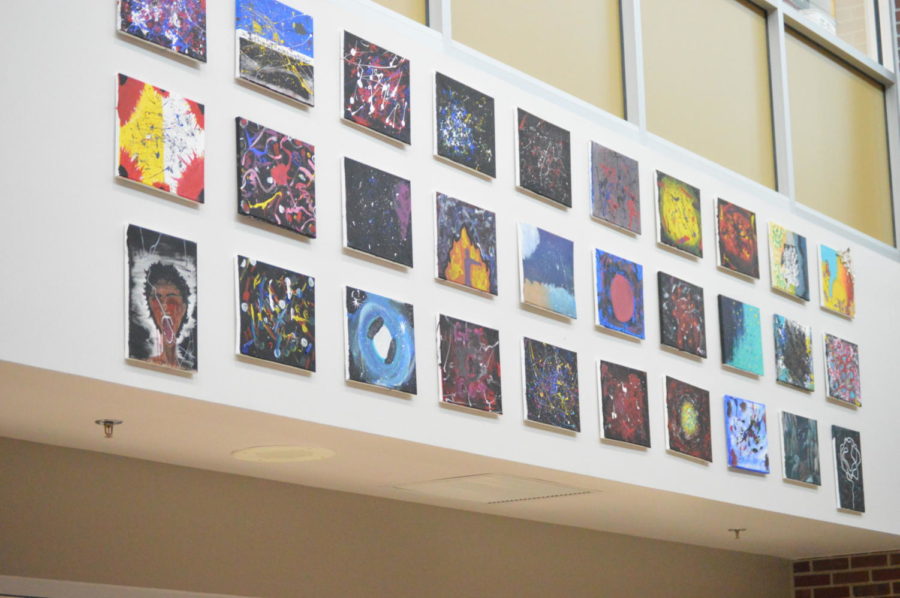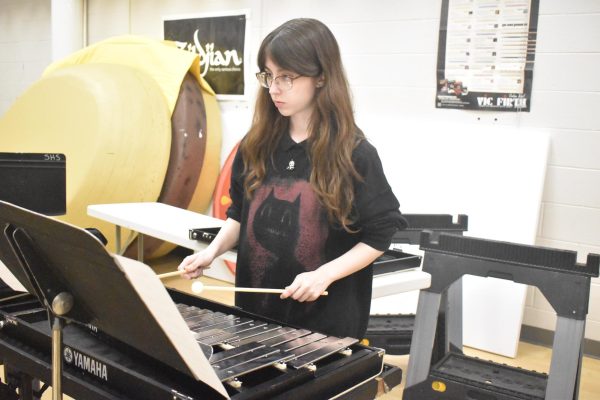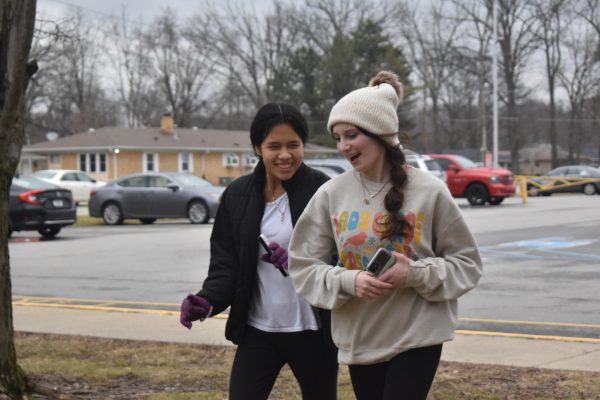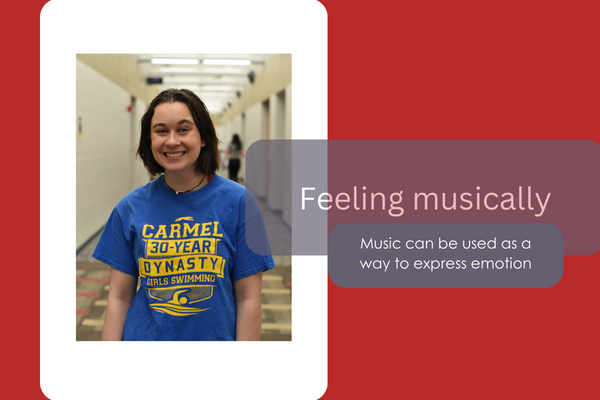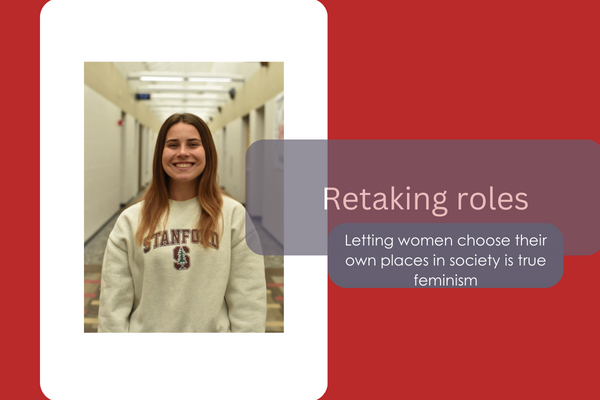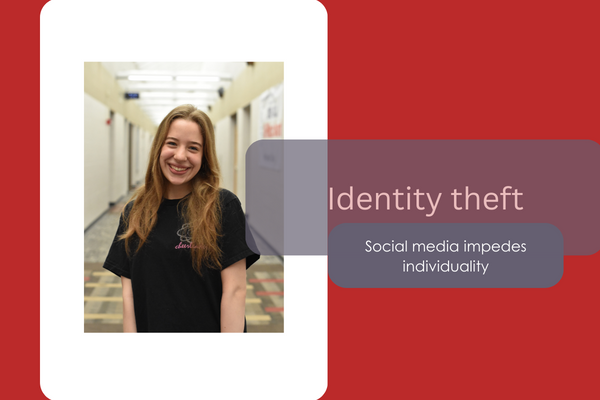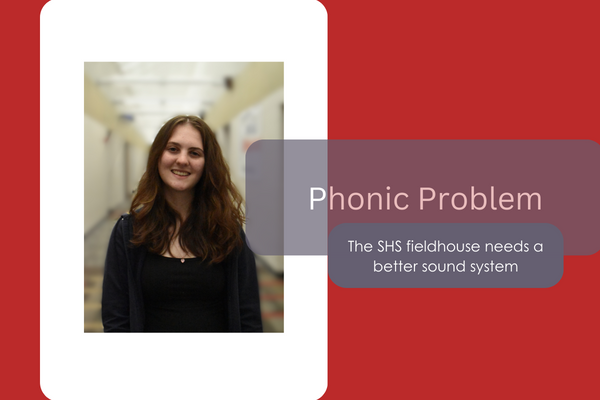Creativity in the classroom
English teacher mixes up curriculum to keep things interesting in the classroom
Students hovered over their paintings, carefully adding different colors and textures to create their abstract masterpieces. This wasn’t an art class though. While teaching a unit on Ishmael Beah’s memoir, “A Long Way Gone,” English teacher Tim Jamriska sensed that his students were getting bored with analytical writing and knew that something needed to change if he wanted to keep their attention.
“Eventually, I was like ‘You know, I’m getting tired of… just looking at the text and writing, let’s mix it up,’” Jamriska said.
To solve the problem, he crafted a new project where students made abstract paintings to represent the mental head space of the main character and then analyzed their own works.
In today’s education system, some skills, like writing essays and solving equations, are drilled into students, while others, such as art, are often left out. Assistant Principal Amy Boone believes that this project helped to cater towards students who are more artistic and helped them to gain confidence in the classroom.
“There may be students who their strength isn’t necessarily in analyzing writing or writing themselves,” Boone said. “So then they have that opportunity in their class to display something if they are more artistic.”
Jamriska got the idea for the project while they were in the middle of reading the book. One day, he put up a picture of a Jackson Pollock painting, filled with splatters of paint, on the board and asked students to explain how it connected to Beah’s mental and emotional state at that point in the book. The students responded well with great insight and found many connections between the two.
So, he decided to implement the project. Students would pick a quote from the book and create a work of their own. Then, they would analyze their own painting, explaining the reasoning behind its components.
“They had to apply some of the same skills that we were learning throughout the writing process and pull examples from that painting to then kind of explain how the colors and splatters and things represent certain emotions or events that he was experiencing during that chapter,” Jamriska said.
In his eyes, one of the many benefits of this project is that it forced students to fully create their own work. This enabled him to see whether students were capable of applying symbolism and author’s purpose like he had taught them.
“They can’t copy and paste something,” he said. “They have to physically create that something and then analyze that something.”
Additionally, the project allowed them all to confront their prior ignorance and prejudices about Sierra Leone, where the book takes place.
For example, many students only thought of it as a country ravaged by war when it is really a country with real people and a unique culture.
Before they even read the book, his classes took about a week to learn about the culture of Sierra Leone. To begin, they brainstormed about what they already knew about the country. Neither he nor his students knew much, but they were both able to learn a lot through their introduction week.
“That kind of opened their eyes to ‘Oh, there’s real places around the world with real culture that we were totally unaware of,’” Jamriska said.
For him, seeing the students’s eyes opened was one of the most rewarding parts of this project.
The reward for administration and the student body was getting to see all of the artwork displayed in the main hallway.
“It’s nice to add some color and vibrancy in something that’s just a little bit different,” Boone said. “It just looks nice.”
Boone also believes that the students benefited from the change of pace. The cycle of reading, analyzing and writing can get monotonous, and his project provided a necessary break in the cycle.
“They appreciated him doing something a little bit different,” Boone said. “You don’t always get to do paintings in your English class.”
Students in Jamriska’s class can testify to how the switch-up helped them grow.
The change was unexpected, but welcome, according to freshman Charlie Kottlowski. He said that the project helped him to learn how to dig deeper into Beah’s feelings throughout the book.
“I took away the skills of analyzing more,” Kottlowski said. “Like, instead of just looking over the surface of the book, and just the events that are happening…, what’s happening more internally and what’s happening in between the lines.”
This project helped solidify Kottlowski’s analytical skills, and Jamriska hopes it does the same for his other students too.
He wants them to know how capable they are of doing things, even when those things may not be conventional.
“I think they took away that they have really cool thoughts and ideas,” Jamriska said. “And they can present those cool thoughts and ideas in a less traditional way.”

Howdy! My name is Lucy Hiller, and I’m a senior this year (whoop whoop), so I’m savoring every last second I get at SHS. For my third year on The Journal,...


